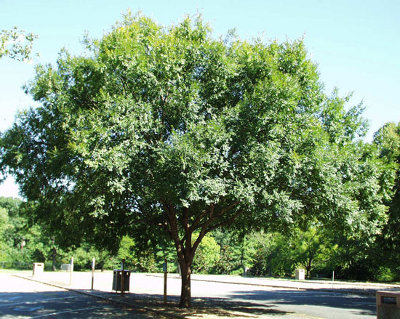Lacebark Elm (Ulmus parvifolia)
Category: Deciduous Trees

Lacebark elm also known as Chinese elm is a tree native to china, North Korea, Vietnam and Japan. But it is grown in United States the places that are hot like China.
This small to medium deciduous tree grows to 10-18 m tall. The trunk and crown are normally slender. The leaves are small, lustrous green single-toothed at around 2-5cm lone and 1-3cm in width. The trunk of this tree has a handsome flaking bark mottled grays and reds. This is the origin of its name lacebark elm.
It can tolerate a wide range of temperatures. This makes it popular choice as bonsai and the single mostly available. Also has a very high tolerance of pruning.
The flowers appear in late summer but they are insignificant. They are single seeded that mature and later fall.
Lacebark elm has the toughest wood in all elms. It is very hard to split this tree and so most of the hard woods items are made from its lumber. Good examples of these are hardwood flooring, cabinets, tool handles, among others.
This tree is also suitable for tough landscape. This is because of its toughness and ability to adapt in harsh situations, like air pollutions and drought. Places like parking lots and along the streets is a good example of such situations.
Bloom time of this tree is between August and September. It requires full sun and does not need a lot of maintenance. A preferred soil is clay and should be well drained.
One of the notable things for this tree is that it has excellent foliage, multi-colored bark, rapid growth and resistance to Dutch elm disease. Dutch elm disease is a fungal infection caused by airborne bark beetles. This disease is a nuisance for most elm trees. But there are other diseases that affect this tree though occasionally. These diseases include rots, cankers and leaf spots.

 Back To Category Deciduous Trees
Back To Category Deciduous Trees